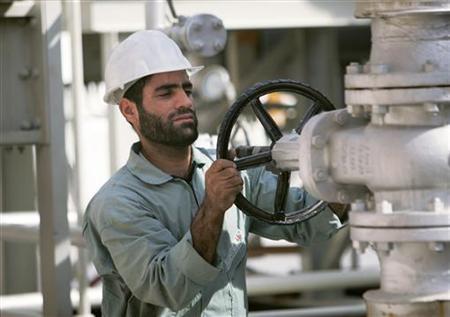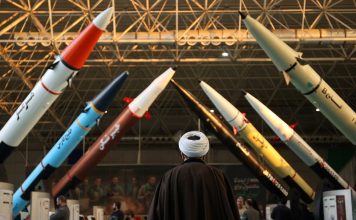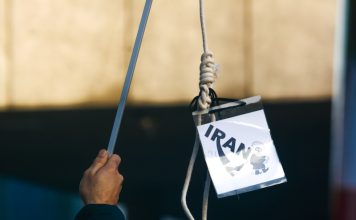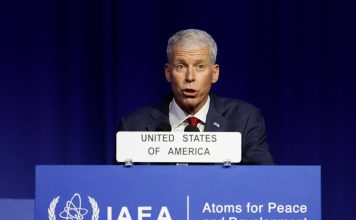By Ahmad Rafat
Workers at 15 oil, gas, and petrochemical projects and four power plants in nine Iranian provinces are on strike since Aug. 1, in the first large-scale industrial action by workers in Iran’s energy sector in 41 years. The strike is now spreading to the rest of the country.
The strike-hit sites include Qeshm Heavy Oil Refinery (in the southern province of Hormozgan), Abadan Refinery (in the southern province of Khuzestan), Mahshahr Petrochemical Complex (in the southern province of Khuzestan), the South Pars Oil and Gas Refinery’s phases 14, 22 and 24 (in the Persian Gulf) and the Lamerd Petrochemical Complex and the Pars Petrochemical Company (both in the southern province of Bushehr).
The recent strike was triggered by the suicide of Omran Roushani Moghaddam, a contract worker at the Yadavaran Oil Field in Hoveyzeh, in Khuzestan, on June 10. Mr. Moghaddam had reportedly told his coworkers that he had lost all hope and did not see a way out, given his low wages and poor working conditions.
The government of President Hassan Rouhani will face a major economic crisis if the nationwide strikes by energy workers spread further. For the first time in the history of the Iranian labor movement, the creative community of Tehran and workers in the health and public sectors in seven provinces have joined the striking oil workers. In recent weeks, there have also been strike calls made on social media and in graffiti on the walls of several cities. If the industrial action swells into a national resistance movement, it could bring the present government to its knees.
[aesop_image img=”https://kayhanlife.com/wp-content/uploads/2019/09/2019-09-21T163646Z_902210948_RC1A1C4914B0_RTRMADP_3_SAUDI-ARAMCO-USA-IRAN.jpg” panorama=”off” credit=”FILE PHOTO: A general view of Abadan oil refinery in southwest Iran, is pictured from Iraqi side of Arvand Rud [Shatt al-Arab] in Faw south of Basra, Iraq. REUTERS/Essam Al-Sudani” align=”center” lightbox=”on” captionsrc=”custom” captionposition=”left” revealfx=”off” overlay_revealfx=”off”]
Iran’s 2020-21 budget projected $4.5 billion in oil revenue for the first three months of the Iranian calendar (the year beginning March 21). However, the country has generated only $420 million in oil revenue in that period — 10 percent less than the expected amount. The government’s 2020-21 forecast was based on the country selling 1 million bpd at $40 per barrel or its equivalent in gas.
Meanwhile, Iran has neither exported 1 million bpd, nor sold its oil at $40 per barrel. The official price of Iranian oil on the international market is $31 a barrel. Yet in all likelihood, Iran gets no more than $20 or $21 a barrel, given that it has to sell the oil illegally using international intermediaries.
To protect the export of its oil, gas, and petrochemical products, the Islamic Republic has in the last four decades tried to keep workers in the energy sector happy. This is no longer a priority at the present time, given that U.S. sanctions have reduced Iran’s oil export from 2 million barrels per day (bpd) to only 200,000 bpd.
In fact, the Oil Ministry is regularly late in paying the fees and expenses of the contractors that hire workers in the energy sector. This puts massive pressure on the private companies concerned, which are already hit hard by hyperinflation, and, in turn, pay low wages to their contract workers. In most cases, workers are owed six months in back pay.
Private contractors hire many of the workers at these refineries, power plants, and companies. For instance, three-quarters of the workers and technicians at the Asaluyeh Complex (in Bushehr) are not employees of the Iranian Oil Ministry.
The Asaluyeh Complex manages the offshore South Pars Gas and Oil Project in the Persian Gulf. With nearly 1,800 trillion cubic feet of reserves, South Pars is the world’s biggest gas field. The project comprises 28 phases, each requiring a large workforce.
The wages of those recruited directly by the Oil Ministry are, on average, 40 percent higher than those of workers hired by private contractors.
Iranian labor laws do not apply to companies that operate in special economic zones, including the Asaluyeh Complex, which is within the Pars Special Energy Economic Zone (PSEEZ).
For instance, companies are required to shut down all field operations if the outside temperatures rise about 40 degrees Celsius. However, many workers at the Asaluyeh Complex, including welders whose job requires them to stand on metal scaffoldings under the scorching sun, were forced to work in 50 degrees temperatures last week, some of whom suffered heat strokes and received medical help.
Most workers at the Asaluyeh Complex work 12-hour shifts for three consecutive weeks, then go on leave for six days. Many of them live in other cities and use that time to visit their homes and families. The contractor, however, calculates the workers’ wages based on 8-hour shifts and a six-day workweek.
According to the Majlis (Iranian Parliament) Research Center, the poverty line in Iran is calculated at $570 per household. In its recent report to the Economic Committee of the Majlis, the research center said that 40 percent of Iranian households live in absolute poverty. Some economists believe the figure is close to 50 percent. Whatever the number, it includes many workers in the energy sector.
[aesop_image img=”https://kayhanlife.com/wp-content/uploads/2019/01/2015-11-19T120000Z_548639761_GF20000066330_RTRMADP_3_IRAN-OIL.jpg” panorama=”off” credit=”FILE PHOTO: Iranian workers walk at a unit of South Pars Gas field in Asalouyeh Seaport, north of Persian Gulf, Iran . REUTERS” align=”center” lightbox=”on” captionsrc=”custom” captionposition=”left” revealfx=”off” overlay_revealfx=”off”]
The chairman of the Plan and Budget Organization (PBO) Mohammad Bagher Nobakht recently said that the country’s oil revenue for the current year was only 6 percent of what initially predicted.
Workers at the Haft Tapeh Sugarcane Argo Industrial Complex, near Ahvaz, the capital of Khuzestan Province, have been on strike since June 14. Several labor activists at Haft Tapeh, including Esmail Bakhshi and Mohammad Khanifar, have been arrested often and allegedly tortured while in detention.
The strike at Haft Tapeh initially started in 2015 when a private company bought the sugarcane complex. The factory has changed hands many times since then. Each new owner inherits the problems from the previous one, including unpaid salaries and wages. The workers at Haft Tapeh went on strike last year after the company failed to pay their wages for five months.
Ahvaz Friday prayer leader Abdolnabi Mousavi-Fard, who spoke to the striking workers, said the current problem could be solved if the Islamic Revolutionary Guards Corps (IRGC) were to control the company. The striking workers, however, rejected Mr. Mousavi-Fard’s proposal. The sugarcane plant at Haft Tapeh used to be the largest of its kind in the Middle East.
Workers at the Heavy Equipment Production Company (HEPKO) in Arak, capital of the central province of Markazi, have been on strike for some time now. HEPKO is one of Iran’s major manufacturers of agricultural machinery and equipment.
Although it is unlikely that we will see a massive movement in the country in the coming days, the industrial action and protests could spread to more cities and towns, given the dire economic conditions, the high cost of living, hyperinflation, massive unemployment and the effects of the coronavirus pandemic on people’s health and livelihood.
This article was translated and adapted from Persian by Fardine Hamidi.








